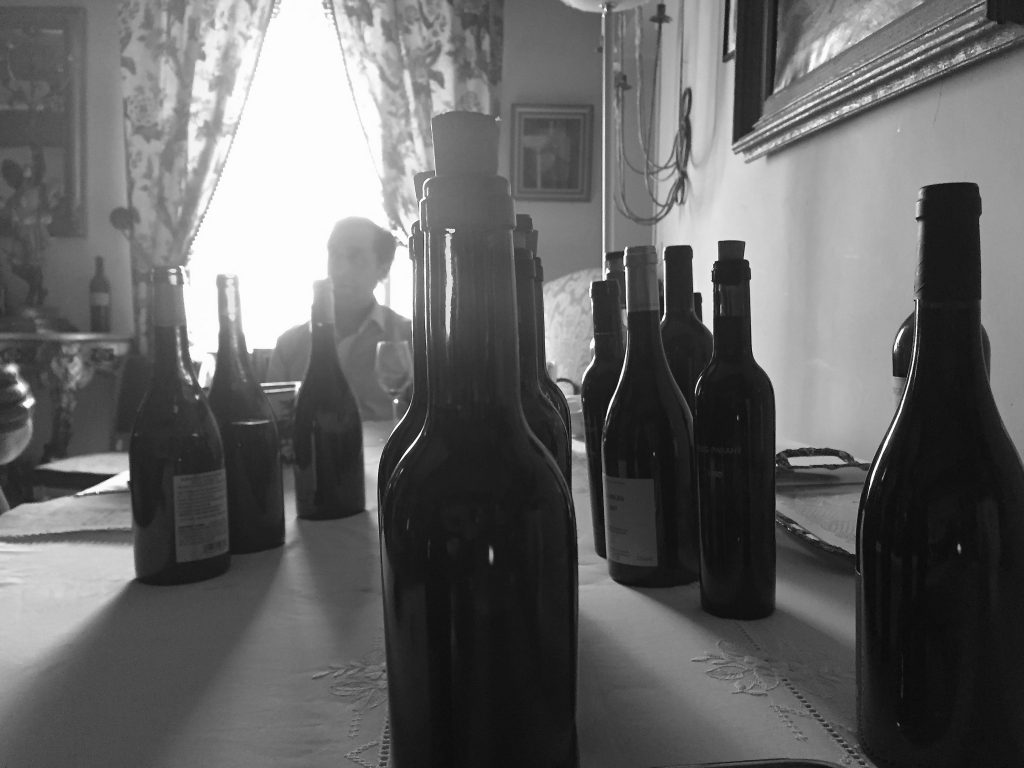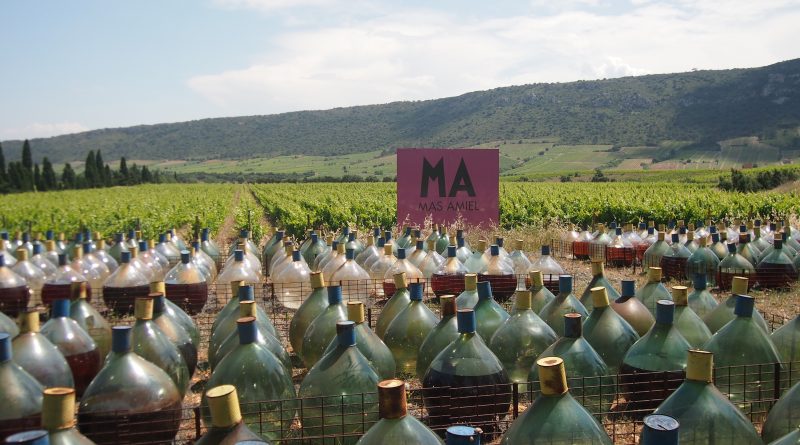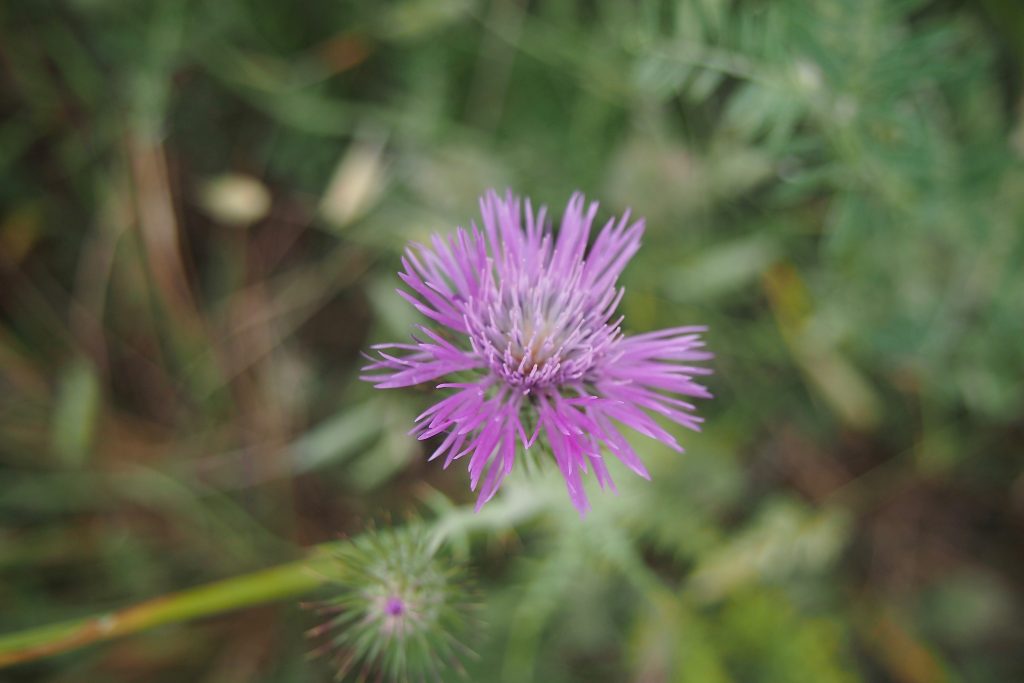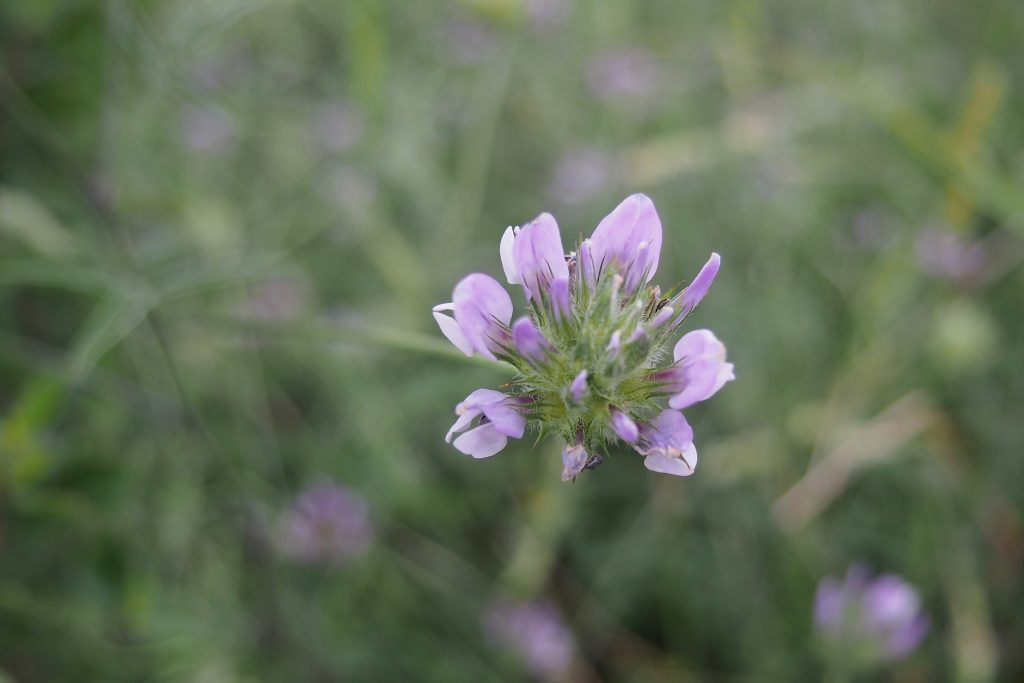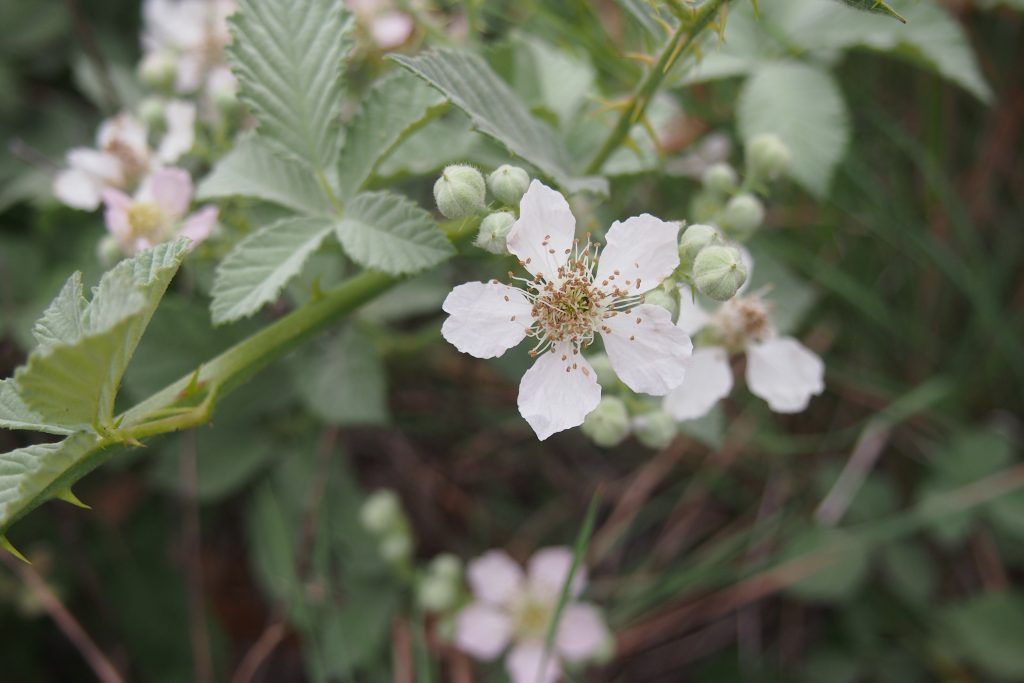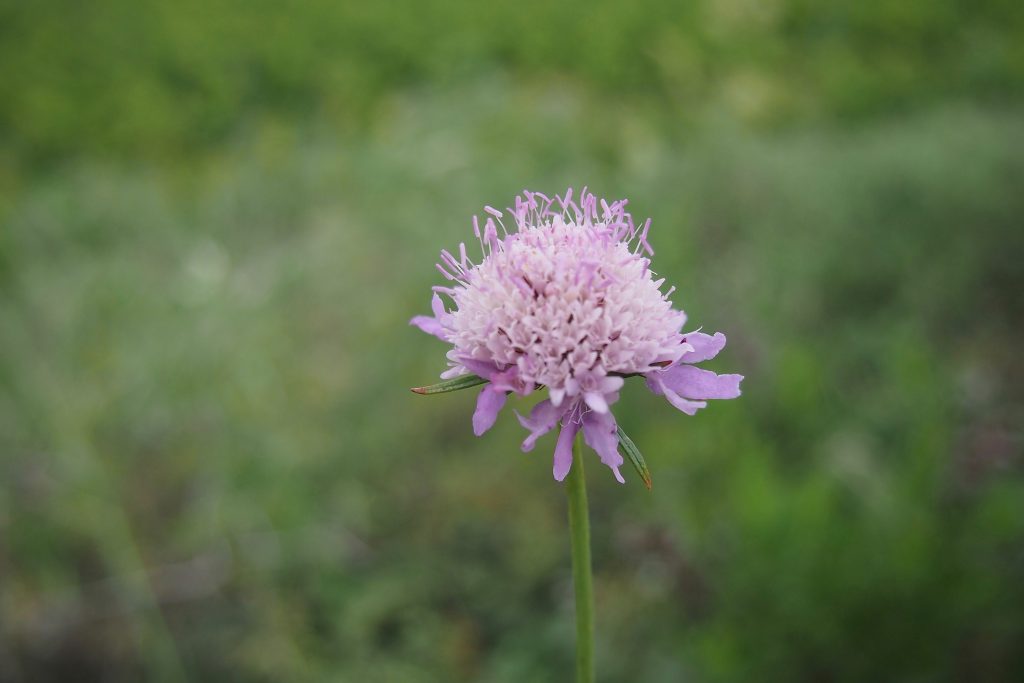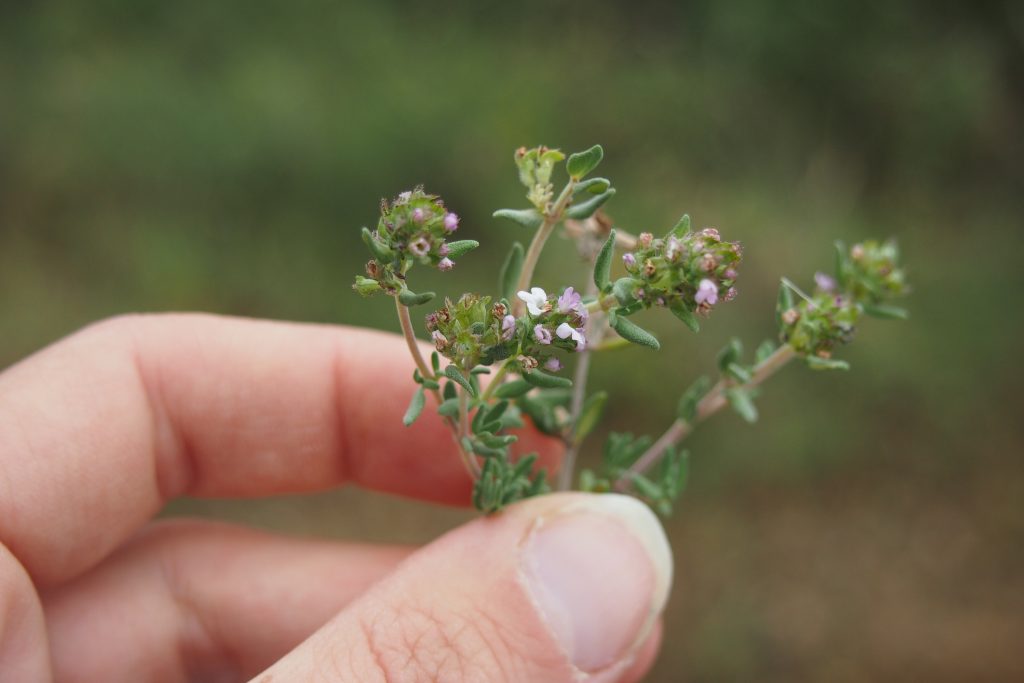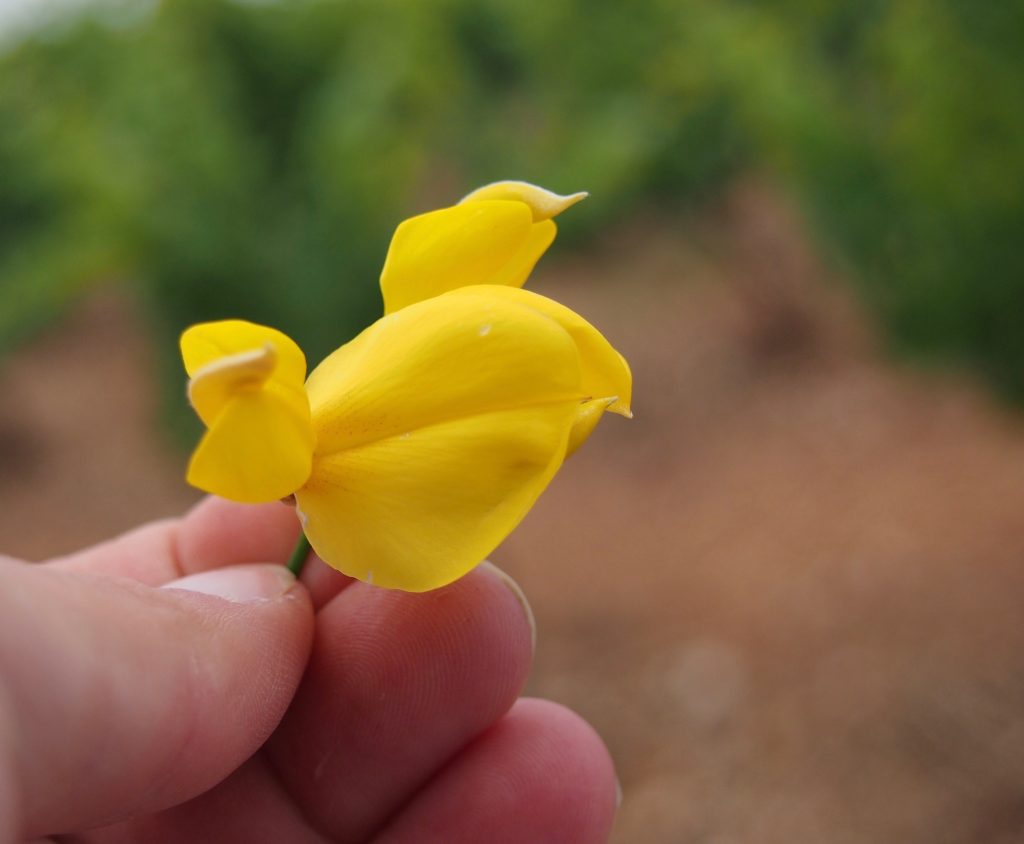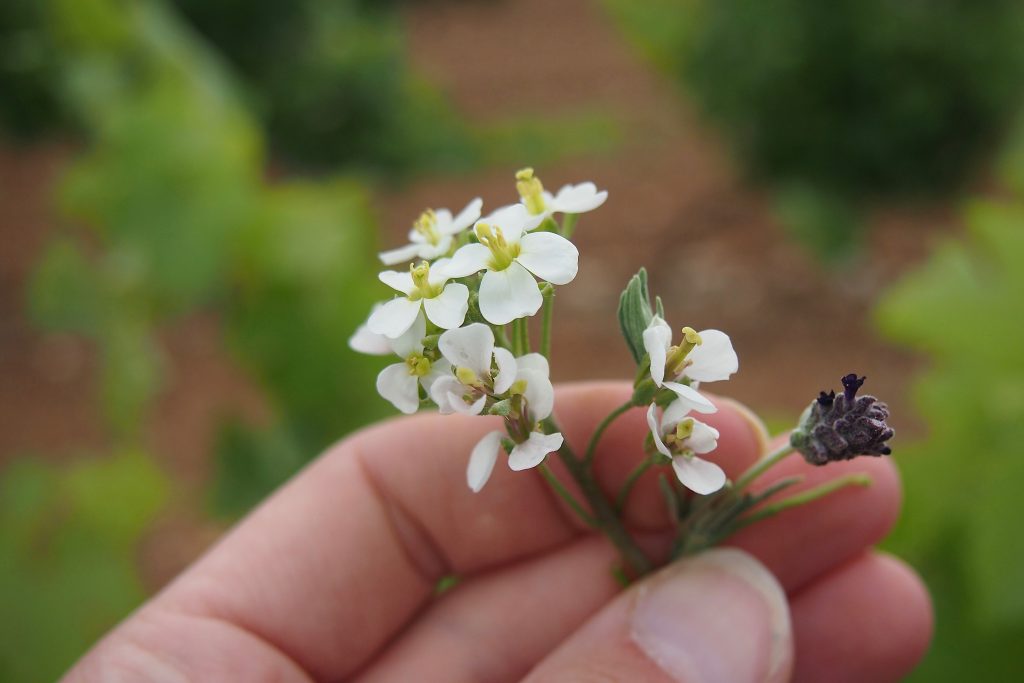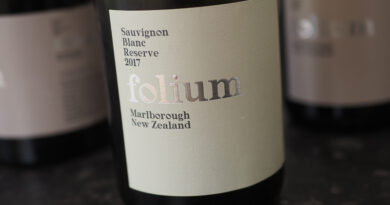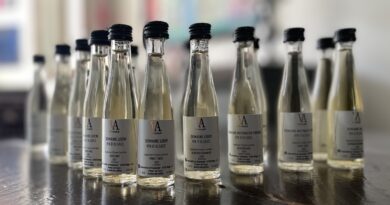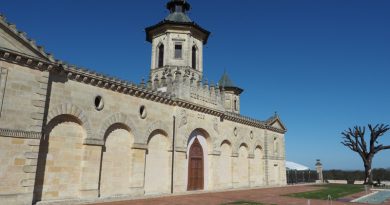Roussillon
Treve Ring visits windswept, wild French Catalonia
When you are neighbouring the single biggest wine producing region in the world, one responsible for one third of France’s production, it’s easy to be lost in the shadows. Languedoc, stretching from the Rhône in the east to the northern Spanish border in the south west covers more than 300,000 ha of vineyards. By some estimates, one in 10 bottles of the world’s wine was produced in the area during the 20th century, and wines from Vin de Pays d’Oc are generally treated with the same sort of bulk-wine flippancy afforded to “Wine of Australia”.
The shadow effect is especially true for Roussillon, tacked onto the Languedoc-Roussillon wine region though it accounts for only 10% of the 10 million hectolitres production. In reality, the two appellations couldn’t be more separate. As suggested by the hyphenated name, Languedoc-Roussillon was once two independent regions – Languedoc and Roussillon. Each region continues to have its own organization for appellation duties today (CIVL versus CIVR). Even though politics and economics have grouped the two together into one administrative department in the late 1980s, culture renders them separate. Languedoc is très French in culture, food, language and character, whereas the strong influences of Catalan and Spanish life, language and culture are clear throughout Roussillon, part of France only since the mid 17th century. Perpignan, the main city of Roussillon, is only 40 km from the Spanish border, and street signs are twinned: once in French, and again in Catalan. Many locals identify themselves as Catalan, and the influence is seen in more than the accent. Cuisine is distinctly Catalan, with dishes like cod brandade, grilled snails, ample anchovies with garlic and olive oil (forget about butter down here) and the ubiquitous, and delicious, crème catalane. If you’re visiting Roussillon, it’s much easier and closer to land in Barcelona than in Paris, and drive across the border.
Since January 1, 2016, Languedoc-Roussillon is part of the new region Occitanie. The name Languedoc originates from the language spoken in southern France, langue d’oc, also known as Occitan. Prior to the 20th century, Occitan was the language spoken in Languedoc, and Catalan was the language spoken in Roussillon. The southern-most wine region in France, Occitanie comprises five departments, and borders Provence-Alpes-Côte d’Azur, Rhône-Alpes, Auvergne, Midi-Pyrénées on the one side, and Spain, Andorra and the Mediterranean Sea on the other side.
Roussillon situated
With more than 28 centuries of viticultural history, Roussillon is one of the oldest wine regions in France, beginning when vines were planted and harvested by the Greeks and Romans. Today Roussillon places ninth in the ranking of French wine producing departments, with 2 percent of national production by volume. In the height of production, in 1882, there were 76 million ha of vineyards. Today that has shrunk to 21,400 ha under vine, 70 percent of which is AOP. The average yield is 28 hl/ha, while the French average yield hovers around 60 hl/ha. Dry wines make up more than 13,000 ha, almost double the area for the sweet, fortified Vin Doux Naturels (VDNs) that the region is famous for. In 2016, total production in Roussillon was 604,000 hl, and 448,000 hl was dry. There are 2200 wine growers with an average size of 10 ha, and interestingly, these estates are demographically more women-run than men. Roussillon’s 25 co-operatives drive 75 percent of the wine production, leaving approximately 380 private estates.
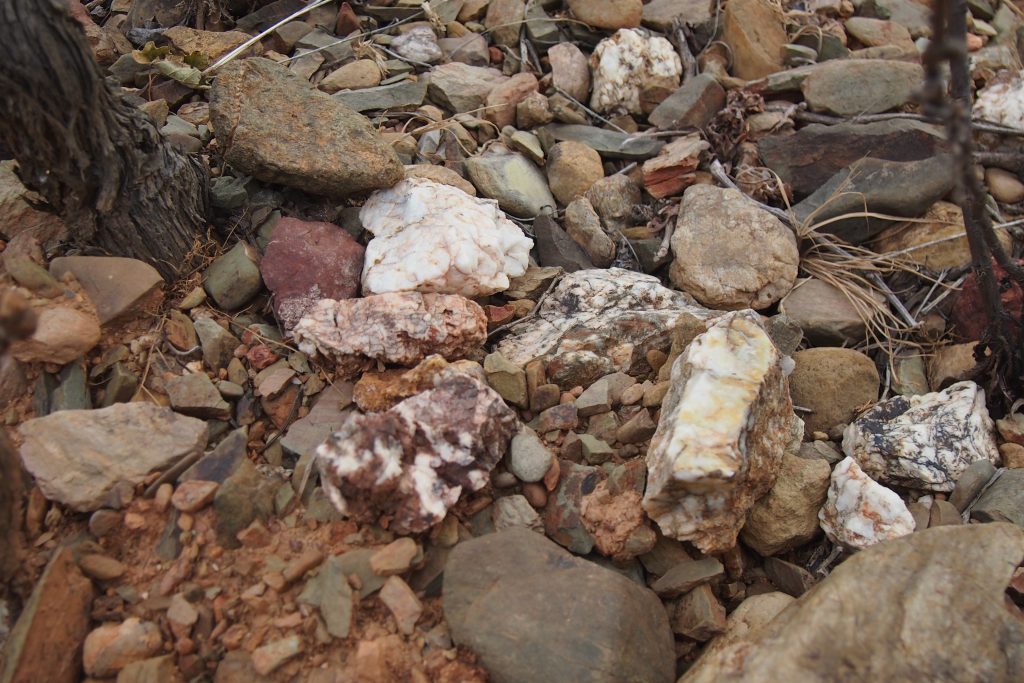
An amphitheatre situated in the Pyrénées-Orientales, Roussillon’s vineyards stretch from sea level to 650 metres. It is surrounded by the Corbières mountains to the north, the Pyrénées to the West and the Albères to the South. There are three rivers traversing the region from north to south: The Agly, The Têt and the Tech, which delineate three distinctly different valleys, and a wide range of terroirs and microclimates. Massive upheavals in the tertiary and quaternary period have left a wide range of soils and subsoils, though clay/limestone and decomposed schist, of numerous types, are found most commonly. The region is home to some of the oldest vineyards in France, many still trained in bush vine or modified gobelet.
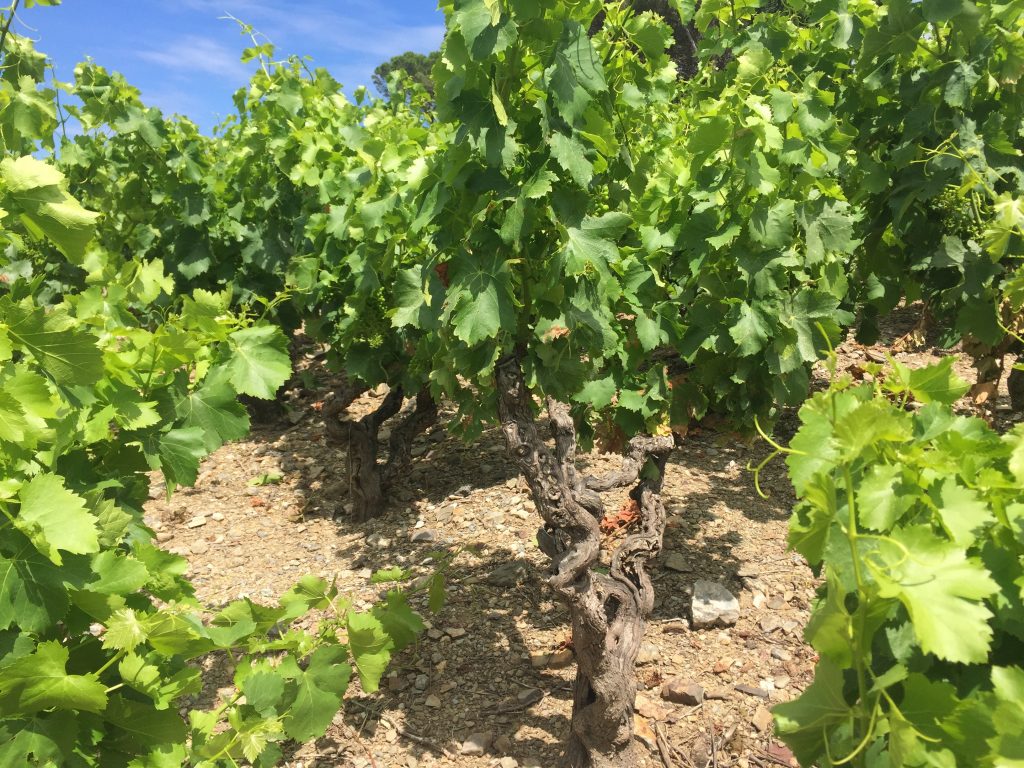
Hot summers, mild winters and autumns characterise the Mediterranean climate, with seven distinct winds cooling and cleansing the vineyards, allowing Roussillon the number one position in organic and biodynamic viticulture in France. The average rainfall is 500-600 mm, with storms quick and passing, most often in the fall, and fortuitously fast in draining out down the slopes to the sea. The region is blessed with plentiful sunlight approximately 316 days of the year, with the average daily temperature 15 Celsius, making it the warmest wine region in France.
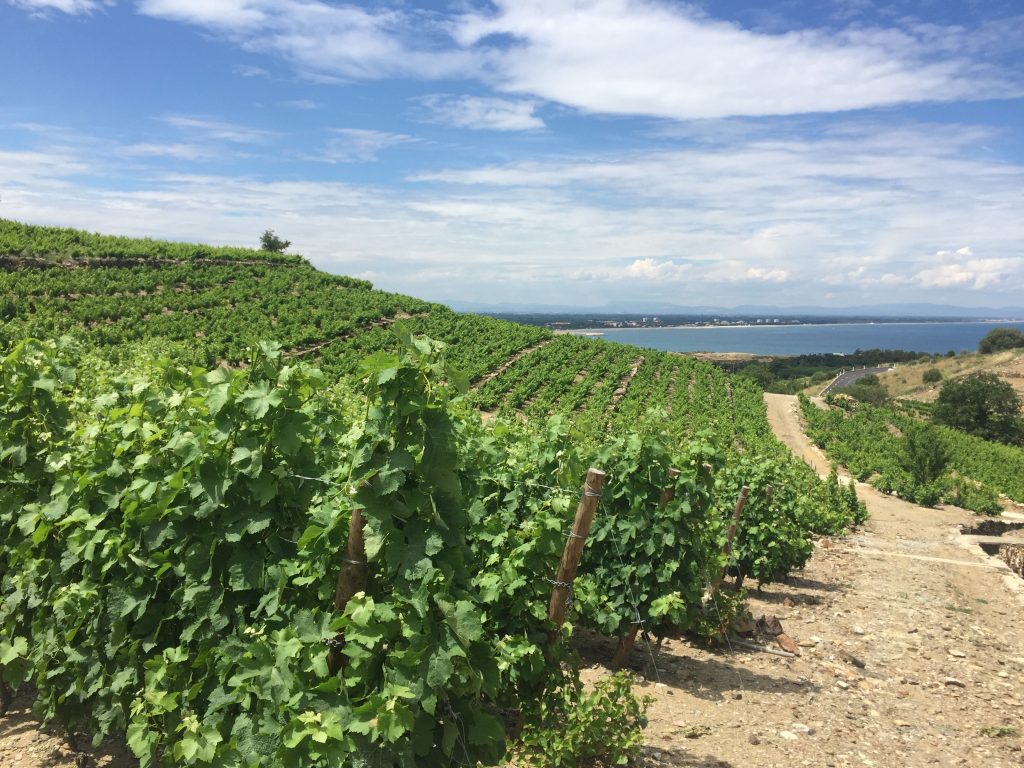
Dry Roussillon – Tasting Terroir
Though historically known for its fortified sweet wines (Vin doux Naturel), it is the dry wines that are exciting, leading this distinct, obscure, often-overlooked region into the future. These are vivid, wild and powerful wines. Imagine blending Priorat with the Rhone, swept with cooling winds, kissed by the sea, complexed by limestone and schists, scented with heady garrigue scrub, and brightened with altitude. There are 9 AOPs and 3 IGPs within Roussillon for dry wines. Côtes du Roussillon and Collioure are the two AOPs for white, rosé and red wines, while Maury Sec, Côtes du Roussillon les Aspres, Côtes du Roussillon Villages, and the appended village names Caramany, Latour de France, Lesquerde, and Tautavel make up the red-only AOPs (the latter four recognized as the ‘cru’ of the region). Reds make up 59 percent of the dry wines, with rosés second at 26 percent, and whites last at 15 percent. Roussillon reds range from floral and supple carbonically macerated wines of Carignan and Syrah, to powerful, dense and complexed wines, often laced with minerality and garrigue, and with structure for aging.
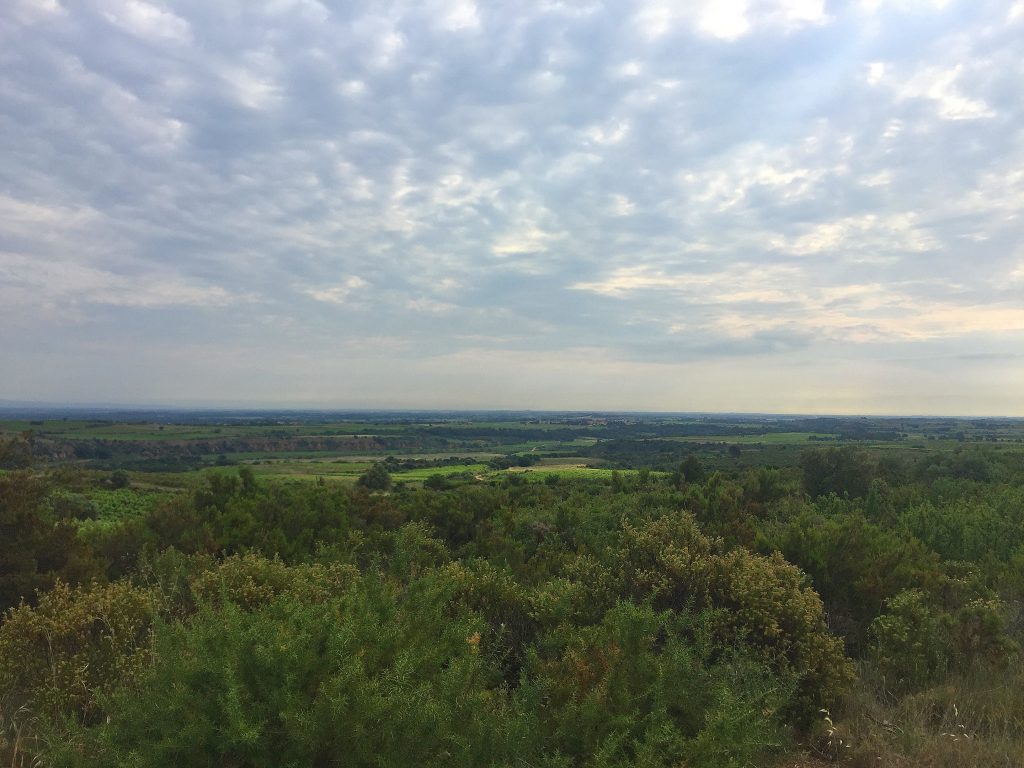
The three IGP dry wines are Côtes Catalanes and Côte Vermeille for white rosé, red and Rancio, and IGP d’Oc, for white, rosé and red. Dry Rancios are quite interesting, with a mandated oxidative maturation for a minimum of five years. Whether white or red, they all turn a deep amber or walnut hue, and proved a fantastic match for the region’s Catalan cuisine. Another quirk to note: AOP wines must be a blend of grapes; single varieties are not allowed. This is why there are many top quality IGP wines of single grapes and sites (a sommelier’s secret gem). There is also a splash of traditional method sparkling wine made, less than I would have imagined, though producers I spoke with chose to defer to the fizz of nearby Limoux, in Languedoc, rather than undertake the process themselves.
There are 23 grape varieties used for dry wines, and 13 allowed within the AOP rules. For red and rosé wines AOP allows Grenache Noir, Grenache Gris, Carignan, Cinsault, Lladoner Palut, Mouvèdre and Syrah. For white AOP wines, Grenache Blanc, Grenache Gris, Macabeu, Malvoisie du Roussillon, Marsanne, Roussanne and Vermentino are permitted. In the IGP wines, Merlot, Cabernet Sauvignon, Cabernet Franc, Chardonnay, Viognier and Sauvignon Blanc make regular appearances.
Sweet Roussillon – Tasting History
With more than 80 percent of France’s Vin Doux Naturels production, and a history that dates to the 13th Century, it’s no wonder that Roussillon is intrinsically linked with these mysterious images of sun-baked glass demijohns of fortified wines. As with many wine regions with a lengthy tradition of historic wines, it’s both a burden and a curse; the vast majority of producers focus on their quality table wines, with sweet wines making up a minimal proportion, or none at all, of their total production.
Grenache Blanc, Gris and Noir, Macabeu, Malvoisie de Roussillon (a.k.a. Tourbat), Muscat à petit grains and Muscat d’Alexandrie are the grapes permitted for VDNs, the blend of which is dependent upon the five distinct AOPs.
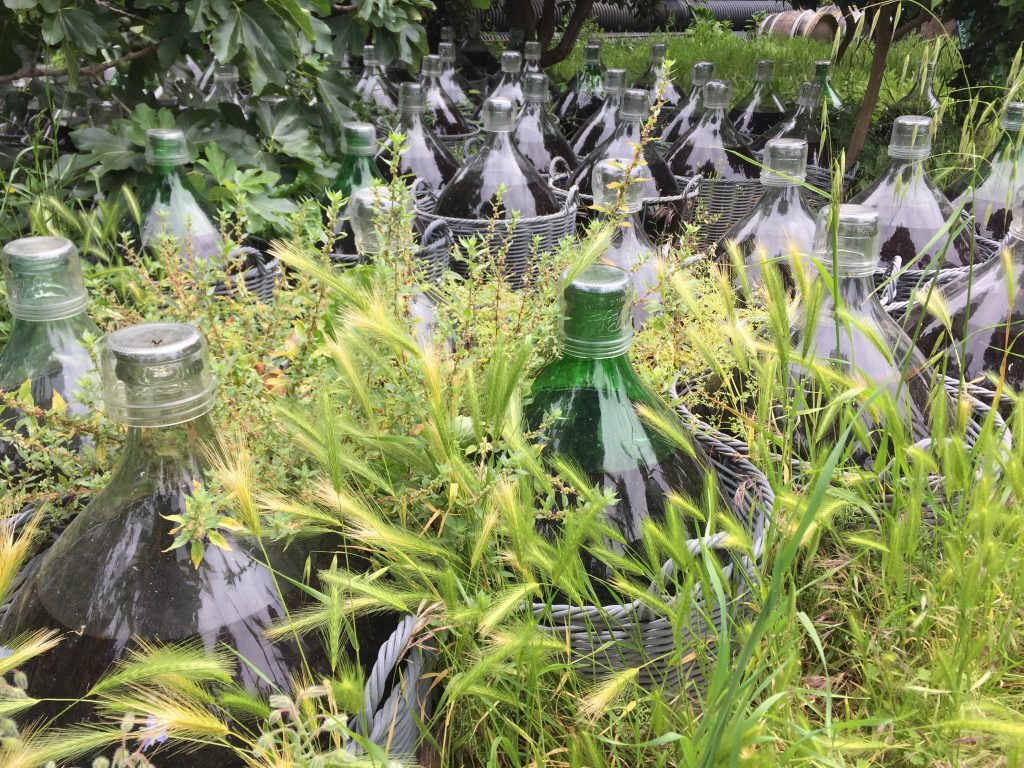
VDNs begin when the must registers at a minimum of 14.5 percent alcohol, which is when mutage is applied. This is the addition of pure neutral grape-based alcohol (96 percent alcohol by volume) to arrest fermentation, and keep the sugar in the wine. The spirit is added in 5-10 percent of volume to the must. There are two ways to do this. You can apply mutage to white, rosé or red grapes that have been direct pressed or from skin contact maceration, while they are in the liquid phase. Alternatively, you can apply mutage on the marc to obtain concentrated wines full of colour and structure. In this case, the mutage acts on the marc layer, utilizing the extractive power of alcohol over two to three weeks.
After fortification is complete, the main process ruling VDNs commences: aging. With the exception of Muscat de Rivesaltes and certain white, rosé and red VDNs like Rimage and Grenat, which are bottled early because they are meant to be drunk young and fresh, VDNs are marked by their extended oxidative aging, between 36 months and up to 20 years and beyond. Ambré (white grapes) and Tuilé (red grapes) are oxidative styles within Rivesaltes, Maury and Banyuls AOPs, and indicate at least 30 months of aging has occurred. If Hors d’Âge (very old) is applied to the label, it indicates a minimum of five years oxidative aging was applied, and there will be no vintage year. If a wine is labelled Rancio, it reflects a wine that is of Hors d’Âge lineage, but with intense oxidative aging, often through time in glass demijohns outside in the hot Roussillon sun, where wines can concentrate for up to one year before being returned to casks, barrels or tanks in the cellar.
TASTING TERROIR : DRY RED ROUSSILLON AOPs
The soils of Roussillon are extremely varied, and influence the final wines. With red wines making up nearly 70 percent of production, it’s easy to taste these regional differences in the wines. Here are some distinctive AOPs to look for:
AOP Côtes du Roussillon Les Aspres: the oldest vines in Roussillon, at altitude on terraces with siliceous yellow clay and limestone = elegant, firm, age-worthy wines with wild garrigue and spice.
AOP Côtes du Roussillon Villages Caramany: granite and gneiss = carbonically macerated Syrah and Carignan yield fresh and full bodied youthful wines, as well as concentrated, dark fruited and highly spiced wine.
AOP Côtes du Roussillon Villages Lesquerde: sandy granitic soils rich in iron and gypsum = sophisticated wines with marked minerality, graphite, spices and dark florals.
AOP Côtes du Roussillon Villages Latour de France: rocky grey schist and red clay limestone = garrigue and schistose reds, with wild notes and sweet spices.
AOP Côtes du Roussillon Villages Tautavel: hillside vineyards of limestone and clay scree = ageworthy wines with dark fruit, strong and firm tannins and ample garrigue and spices.
AOP Collioure: with terraced vineyards reaching down from hilltops to sea level on Cambrian grey schist = wines from fresh and fruity sea-tinged wines to richer, spicy reds with sun-ripened fruit.
AOP Maury Sec: slopes of Aptian, non-metamorphic black schist and marl = dark, rich strong and complexed reds with garrigue, dark fruit, full bodied and tannic structure.
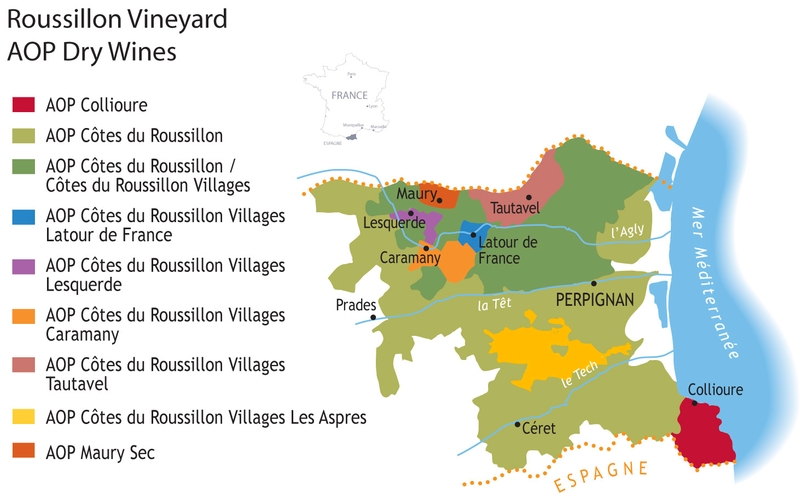
VIN DOUX NATURELS : HOW SWEET IT IS
There are five distinct AOPs for VDNs, each with their own strict regulations. Here’s an overview:
AOP Muscat de Rivesaltes : covers 90 communes and a wide range of soils and terroirs. Only Muscat à petits grains and Muscat d’Alexandrie are permitted, with a minimum 100 g/l RS. They are meant to capture the floral, grapey joy of Muscat, with exotic fruits and citrus in youth, turning golden and honeyed with time.
AOP Rivesaltes : covers 86 communes in the Eastern Pyrenees and nine communes in the Aude department, covering all the soils and terroirs. Can be produced in Ambré, Garnet, Rosé and Tuilé styles, as well as carry Hors d’Âge and Rancio designations.
AOP Maury : covers 4 communes in the Eastern Pyrenees across the black marl and black schist soils shared by AOP Maury Sec. Grenat, Tuilé, White, Ambré styles, along with Hors d’Âge and Rancio designations.
AOP Banyuls: Covers 4 communes in the Eastern Pyrenees that received AOP Collioure status for dry wines. White, Rosé, Rimage, Ambré And Tuilé are made, though the wines that are Grenache based are legendary. For AOP Banyuls Grand Cru, the wines must have mutage on must, and at least 30 months oxidative aging in wood.
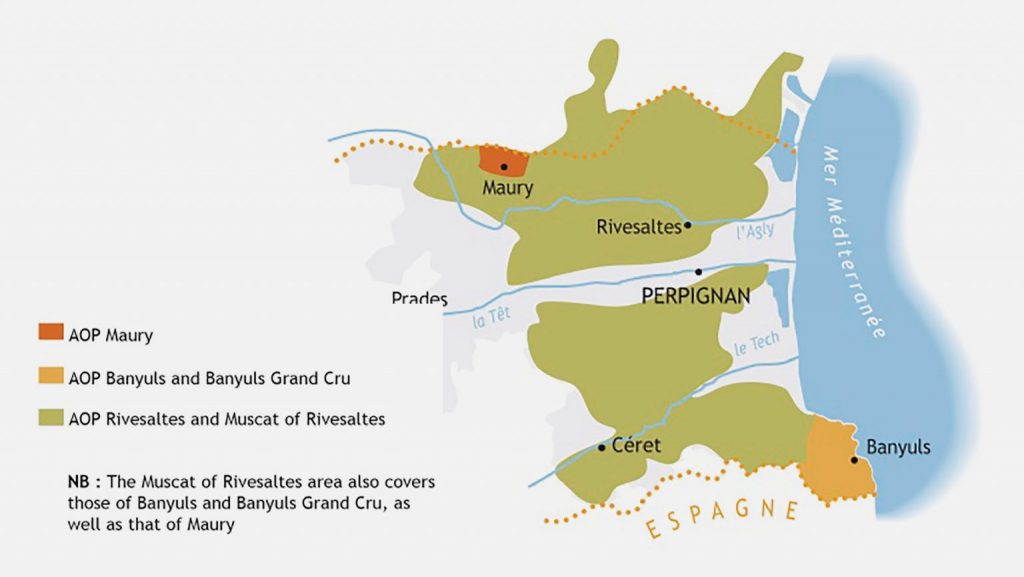
THE WINDS OF ROUSSILLON
There are seven distinct winds in the Roussillon, cleansing the vineyards to their status as the number one region in France for organic and biodynamic viticulture. It is said a wind blows at least one day out of three.
Tramontane – North West
Mistral / Cers – North
Narbonnais – North east
Levant – East
Marinade – South East
Sirocco – South
Vent d’Espagne – South West
Canigounenc – West
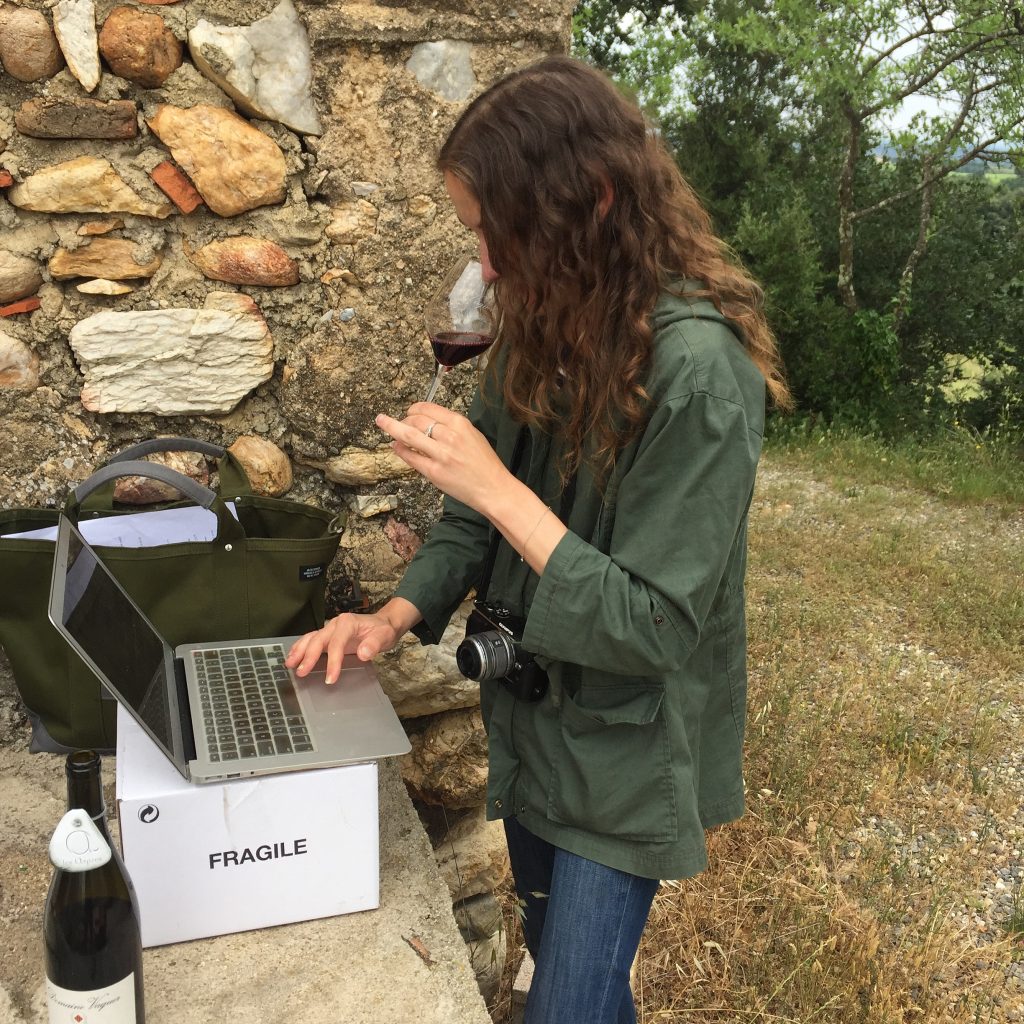
Tasting Notes
Domaine Mas Becha 2016 Blanc des Clottes, AOP Côtes du Roussillon
Charles Perez is one of the young leading lights of Roussillon. His organically farmed estate sources fruit from three hillsides in Les Aspres. Low intervention throughout. Grenache Blanc, Vermentino and Macabeo were all picked and fermented on the same day, in 600L demimuid, with minimal sulphur. Very nutty, with almond, tarragon and wild herbs. Salt-licked, this is brisk and herbal, bracketed with a firm, fine frame. Vibrates with acidity. Alluring. 92/100
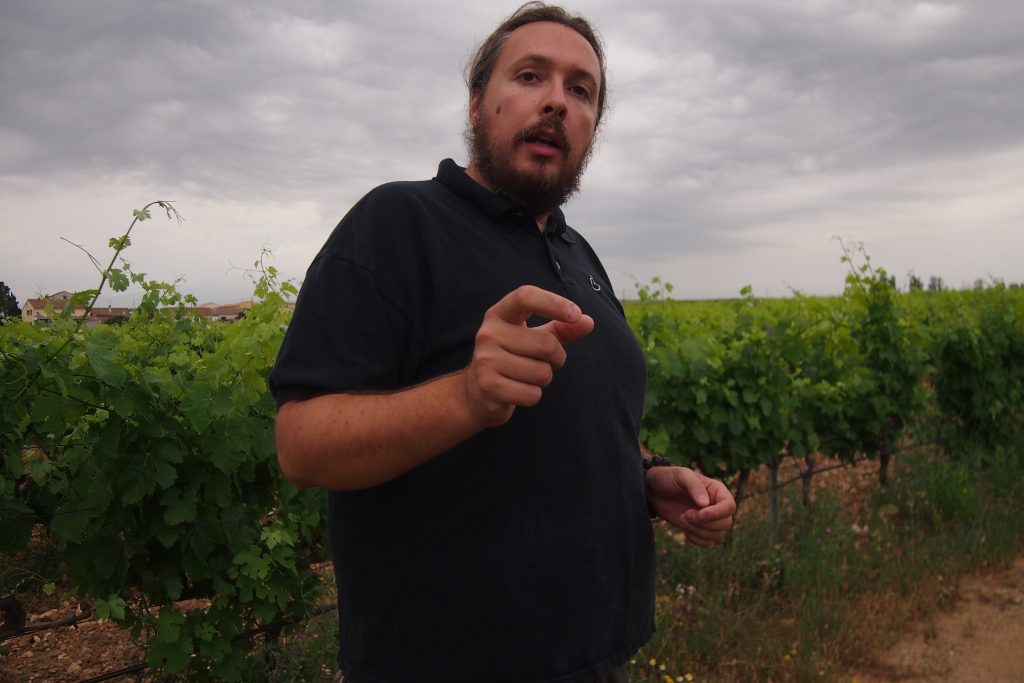
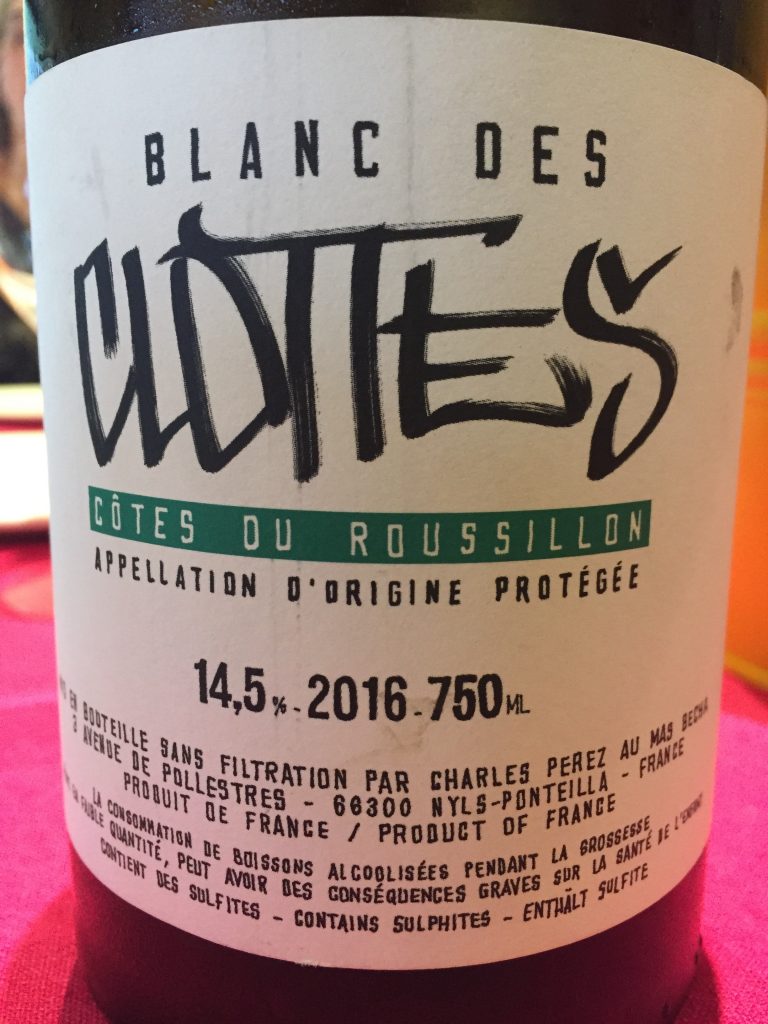
Domaine Boucabeille 2016 Les Orris Blanc, AOP Côtes du Roussillon
Roussanne, Grenache Blanc from 150-400m altitude and schist soils, this was fermented wild and spent six months in 300L barrels, 25 percent of which were new. Rich and creamy, with the wood very well integrated, and framing the herbal-hewn fruit, impressively so at this young age. Lovely pear, spice, lemon verbena and revving stony spice on the finish, this is complete now in youth, and will impress with some years in the cellar. 92/100
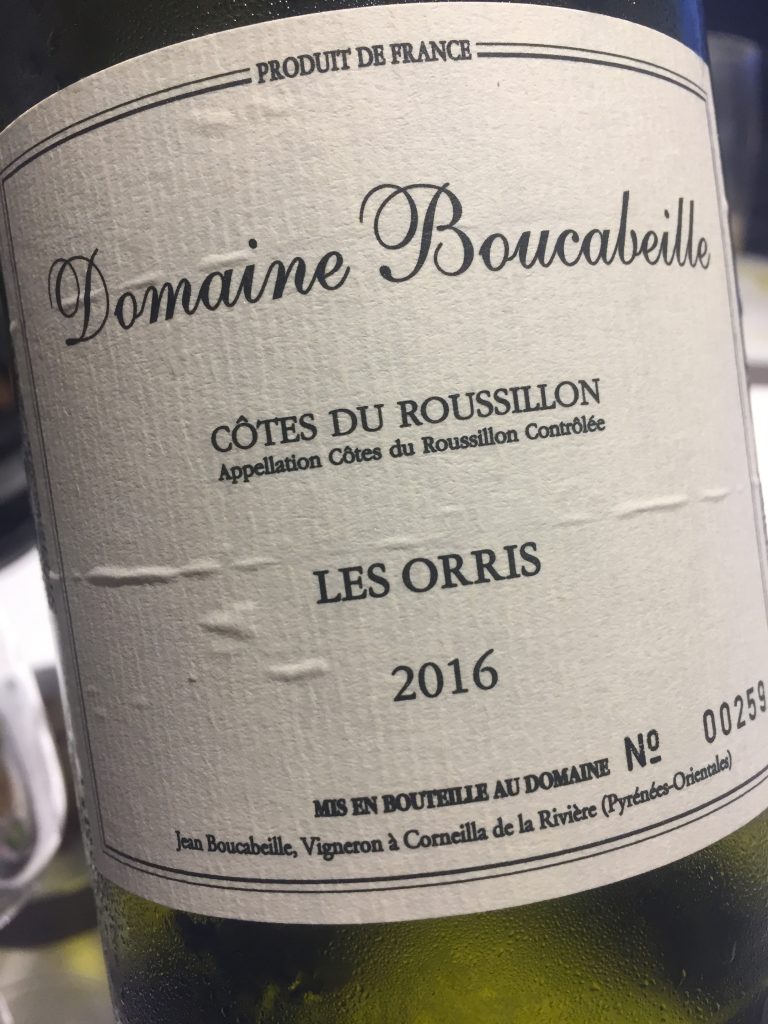
Domaine Matassa 2011 Blanc, IGP Côtes Catalanes
Schist and slate slopes surrounded by garrigue yield this biodynamic Grenache Gris (70 percent) & Macabeu (30 percent), whole bunch pressed in wooden basket press and wild yeast fermented in barrel before aging on lees for 18 months before bottling (lightly filtered but not fined). This richer white is best enjoyed at cellar temperature, with nutty, wild herbs, hay, hints of pear skin texturing and ample flake sea salts on this elastic, medium+ palate. Acidity is humming and vibrating, streaming to the lingering finish. Electric, alive wine, this is age-worthy, drinking beautifully now, and will do with more cellaring. 92/100
Château Lauriga 2016 Rosé, AOP Côtes du Roussillon
Juicy and jubilant blend of Syrah and Grenache Gris, round with strawberry gummies, blackberry gummies, red apple and fine cinnamon spicing on a bed of creamy lees. Fuller and bolder, with a good dose of RS, and a charming youthful appeal right to the snappy finish. Drink now. 89/100
Ferrer Ribière 2015 Tradition, AOP Côtes du Roussillon
Leading biodynamic and naturalist producer, the Ribière family makes low interventionist wines from old vines (up to 130 years old) on exceptionally stony soils in Les Aspres. Grenache, Syrah and Carignan are expressed through textured black cherry, black plum, wild blackberry, on a bed of stones. Wild and firm, with ample gritty tannins, brisk freshness and lovely floral generosity through the warm finish. When tasting these wines, the textural and characterful. 93/100
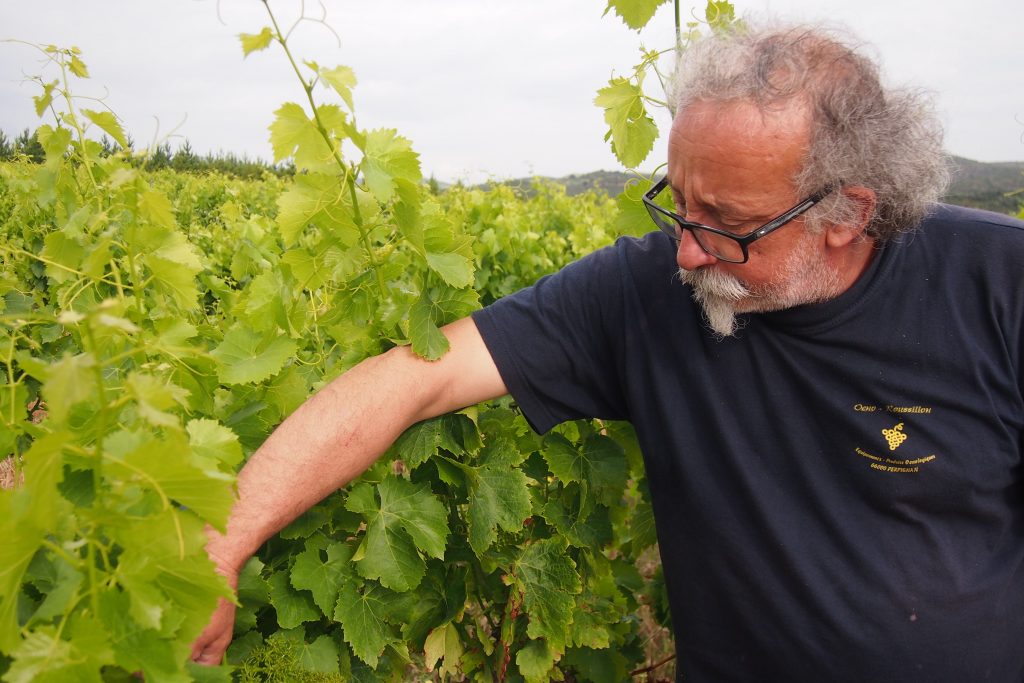
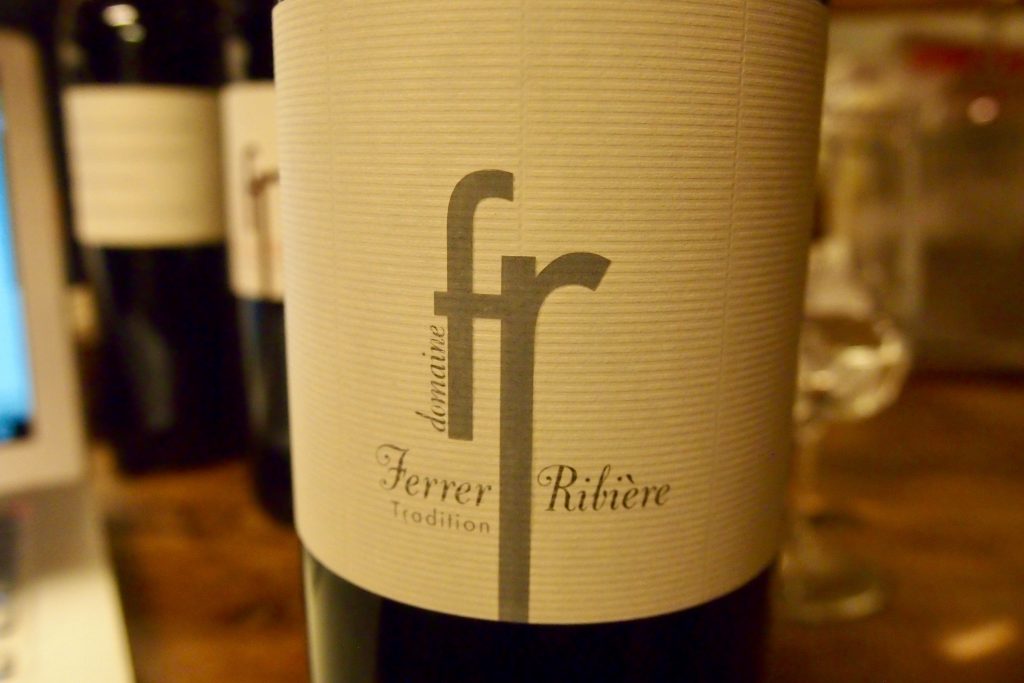
Domaine Vaquer 2012 l’exception, AOP Côtes du Roussillon Les Aspres
Frédérique Vaquer moved from Burgundy to Roussillon with her husband Bernard in the early 1990s, to take over his family’s winemaking estate in Les Aspres. When Bernard passed in 2001, Frederique continued as winemaker. Here old vine Grenache, Carignan, Syrah (from 40 to 80 years old) from their 200m limestone clay estate ages in cement (70 percent) and 1, 2, 3-year-old barrels for 18 months. An alluring nose with light dough, black cherry, black raspberry and plum, expressed across grippy tannins and a textural, finely structured palate. Very pure and finessed, especially considering its 14.5 percent. 93/100
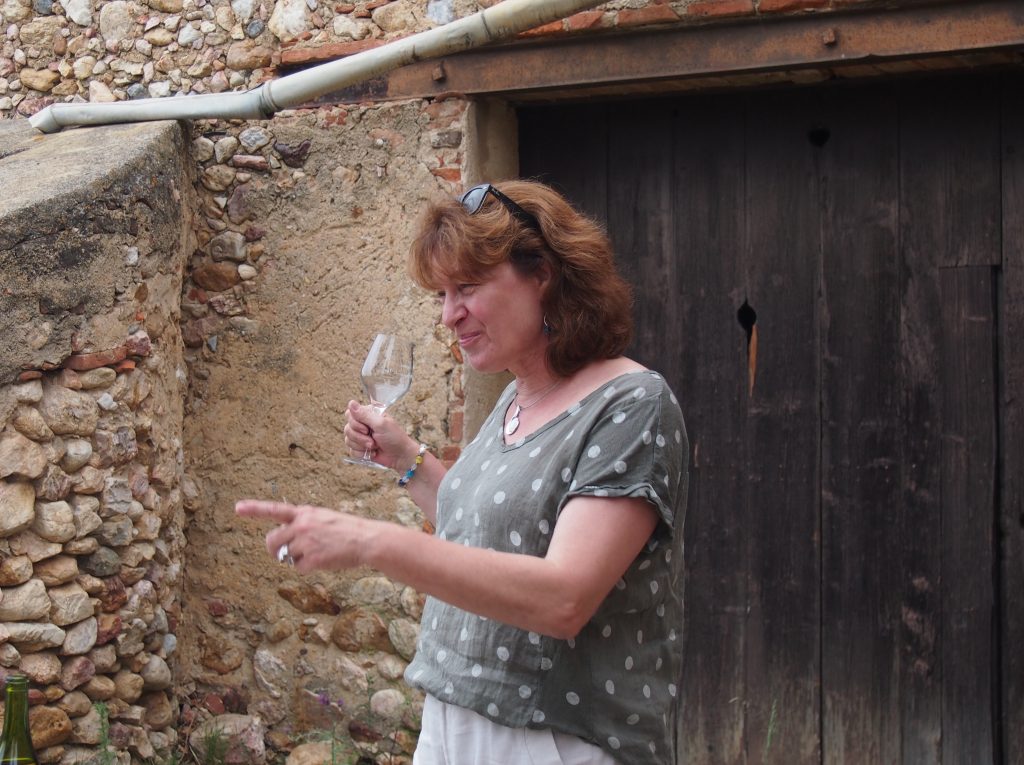
Domaine of the Bee 2015 Les Genoux, AOP Côtes du Roussillon Villages
A blend of 90+ year old Grenache, Carignan, Grenache Gris and Grenache Blanc, this powerful, single-vineyard wine is produced only in the best years; in 2015, just 834 bottles were produced. An alluringly lighter hued red, with the 15 percent white grapes lightening the colour somewhat. The grapes were destemmed, lightly crushed and fermented in open-ended demimuids, with gentle hand-plunging and pressing after three weeks maceration. This rested in new, 1 and 2-year old demimuids for 14 months before being bottled with minimal filtration. Potent and concentrated, but with an effortless lift of raspberry, herbal anise, rosemary-led garrigue over a dense base of resin and slate. Ripe and rich, ample, plush tannins, this layered wine will reveal more with a few more years in the cellar. 93/100
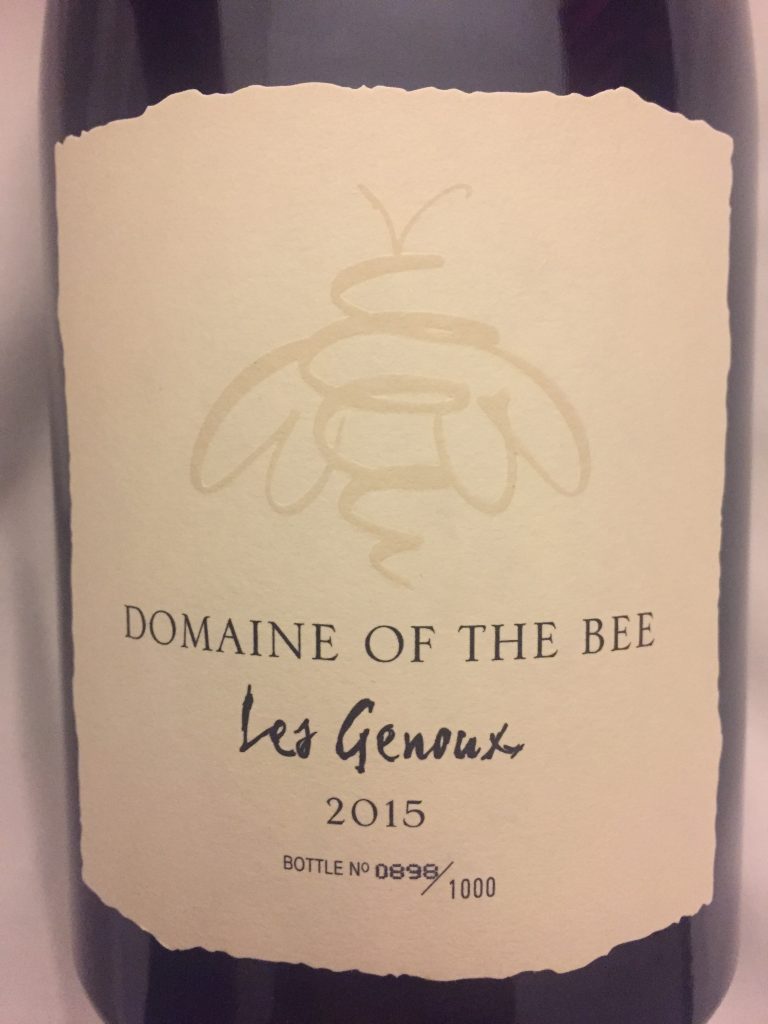
Gérard Bertrand 2011 Grand Terroir Tautavel, AOP Côtes du Roussillon Tautavel
Pebbly, limestone-rich terraces and south-east facing hillsides house the Grenache, Syrah, Carignan in this blend. Lovely perfumed, savoury cassis and anise pervades this confident, concentrated wine. Dense and dark perfumed ripe fruits, violets, figs, cassis rest on fine, slightly sticky tannins, trailing off with sweet spices and lavender. Acidity throughout carries the weight nimbly. 91/100
Domaine Madeloc 2015 Cuvee Magenca, AOP Collioure
Cuvée Magenca is a selection from one, black schistose parcel of 100-year-old Grenache and Carignan which was fermented and barrel-aged, and 40-year-old Mourvedre aged in old wood. The full palate is filled with anise, pointed blackberry, roasted meats, smoked stone, framed with very fine, gritty tannins, and lined with dusky charcoal. A lick of dark florals lingers on the finish. Powerful. 93/100
Domaine de Rancy Rancio Sec Carignan, IGP Côtes Catalanes
This family estate was established in 1920. Fermented wild, this bone dry, 80-year-old Carignan was from the estate’s schistose soils. After spending the first year on the lees in concrete, this was aged in old barrels for oxidative aging before being bottled unfined and unfiltered. Salted, dense and concentrated, with massive salts, some bergamot essence, dried tobacco leaf on a tight, linear body. Much like a potent dry Oloroso. 92/100
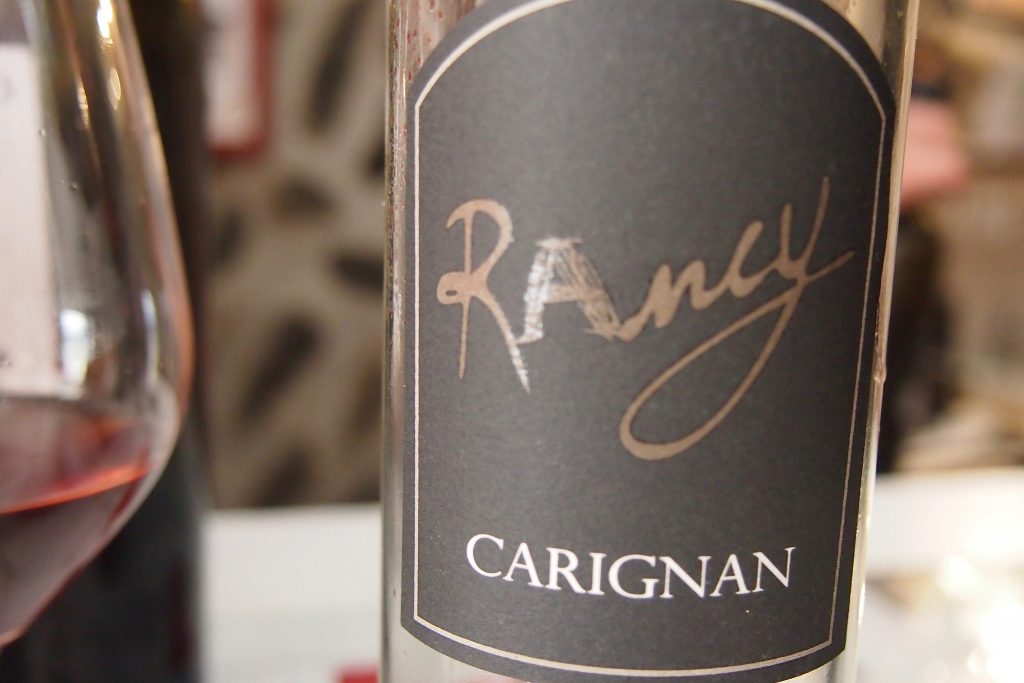
Gérard Bertrand 1974 La Forge Legend Vintage, AOP Rivesaltes Ambré
Complex bouquet of orange peel, marzipan, dried apricots and marmalade. Crystallized ginger spices the very smooth palate, one marked with orange, caramelized sugar, caramel and beeswax. The body is quite light and lifted, especially considering the concentration and complexities found in this 40+ year old wine. Exceptional length and a pair for extra old Gouda or fine almond or walnut biscotti. 93/100
Domaine La Tour Vieille, AOP Banyuls Reserva
With an average wine age of five years (and wine from 1-13 years in the blend) this sees 45+ year old Grenache, Grenache Gris and Carignan partially aged outside for 1 years in glass demijohns (the remainder aged in foudre and barrel), before all was blended into 600L oak barrels, along with older Banyuls. Dense and concentrated, with worn wood, leather, smoked stone, cured meats and ample stoniness on a dark chocolate, prune and sticky raisin base. This is still quite youthful and primary, with a boozy warmth on the finish. 91/100
Mas Amiel 40 Year Old, AOP Maury
This fortified oxidized wine is a blend of 90 percent Grenache and 5 percent each Maccabeu and Carignan from the decomposed shale and black marl of Maury. After one year in demijohns outside, this spent forty years in barrels before bottling. Worn around the edges, with burnished orange, walnut, fresh and dried fig, dark honey, all scented with intense tobacco and Rancio notes. This wine hums with intensity and energy through the very lengthy finish. 94/100
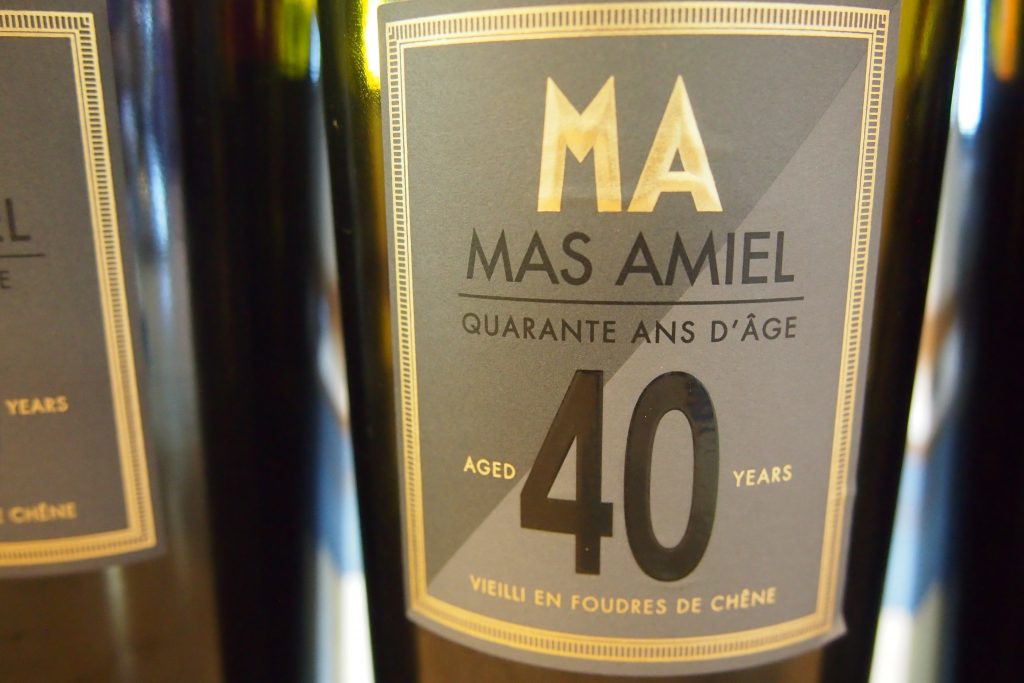
Domaine L’Ostal Cazes 2009 Muscat de Rivesaltes, AOP Muscat de Rivesaltes
Muscat of Alexandria and Muscat petit grains were blended in this biodynamic VDN (vin de naturel) from Rivesaltes. Honey rules through this aged example, with orange blossom, overripe pear, orange oil and tangerine peel brightening a shy hum of spicing on the lengthy finish. Delicate, but potent, this is best served now. 90/100
Puig-Parahÿ 1958 AOC Muscat de Rivesaltes
From perhaps the most legendary producer of old Rivesaltes VDN in Roussillon, with extensive library reserves dating back to the 19th century. This is an outstanding, layered wine with sarsaparilla, earl gray, bergamot, raisins, roasted walnuts drawn across a textural palate, and fine, gritty tannins. Still quite firm notes, with echoes of five spice, star anise on the finish. Incredible length, very much alive. 95/100
